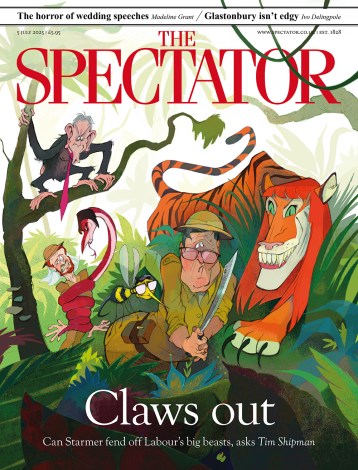Once upon a time, in America, a group of dancers and performance artists gathered in the Judson Church Theater and challenged long-held artistic tenets. The historical significance of their provocative aesthetics led scholars to label their art ‘postmodern dance’, even though there was more to their creations than just dance. A few decades later, their works have not lost their appeal, even though their principles have been regurgitated and tiresomely plagiarised.
Take, for instance, Trisha Brown’s Flower of the Forest, the choreographic installation that greeted viewers outside the Queen Elizabeth Hall over the weekend. Moving through a web of ropes and strategically placed garments, two dancers inhabited the suspended clothing, generating an ever-changing game of bodily interactions with the multicoloured structure. The 30-year-old Flower of the Forest is thus a more than fitting introduction to the two Trisha Brown retrospectives that dominate this year’s Dance Umbrella — one on stage, at the QEH, and one on screen, at Tate Modern.
Brown’s work is monumental, and her artistic lessons encompass all the significant aesthetic trends that modern-day dance-makers draw upon or refer to. Yet her work goes far beyond the mere exploration of new choreography, as it also explores non-dance-specific, though art-related issues. Her presence in London ties in perfectly with the Choreographing You exhibition at the Hayward, which, in true postmodern spirit, addresses the interactions between artworks and the viewers’ space/movement. Indeed, Brown’s work is also part of the exhibition, together with that of other forerunners of postmodern dance. All the main ingredients of the postmodern condition are on display: displaced beliefs, pastiche, collage, blurred boundaries between the viewer, the author and the artwork. Should you feel like it, you can easily engage in some serious or amusing dance-making.
Indeed, fun, whether in the form of the affectionately irreverent translation of Rameau’s operatic music in Brown’s L’Amour au théâtre (2009) or in the challenge posed by William Forsythe’s ‘choreographic object’, The Fact of Matter (2009), at the Hayward, has long been an unsung ingredient of postmodernism. Yet it seems that in the aftermath of post-postmodern dance — and it is about time someone invented a nicer-sounding and more user-friendly term — the focus is on more dramatic matters. Not that I object, though, as the staging of salient and somewhat uneasy contemporary themes has a unique power of fascination.
And this is exactly what Frusted had. Created by Alesandra Seutin and Vicki Igbokwe, this short piece, presented as part of Dance Umbrella’s Brief Encounter series, stands out for its captivating intensity. The splendidly choreographed and equally splendidly performed movement highlights the inner turmoil of women facing everyday battles against society. I only wish the excellent movement qualities of the five interpreters had been matched by excellent delivery of the spoken words. The same could be said of Imperfect Storm, a dance-theatre, or physical-theatre piece, created by Wendy Houston for Candoco Dance Company’s newest triple bill, Renditions. A surrealist take on Shakespeare’s The Tempest, this piece also relies heavily on acting, which was not first-class. Pity, for there were some excellent moments in which the artists of this integrated company drew fully on their unique talents, which, in my view, is what neither Sarah Michelson’s The Hangman nor Emanuel Gat’s In Translation managed to achieve.
Later in the week, the acclaimed writer and performance-maker Raimund Hoghe presented his Sans-Titre at Laban, a work created for and performed with the Congolese dancer and choreographer Faustin Linyekula. The influence of German Tanztheater is clearly evident, even though this emotion-draining duet derives also from other postmodern theatre forms, and stands out for its post-1968 ritualistic theatre modes.
A feeble whiff of postmodernism was detectable in the Royal Ballet’s rather badly composed quadruple bill. Kim Brandstrup’s new work, Invitum Invitam, juxtaposes the reality of a rehearsal with that of the performance inspired by Racine’s Berenice. Brandstrup is good at making fluid dances and captivating duets and, luckily, this work abounds in both. Yet the highbrow theme and the complex scenic apparatus, which include those now omnipresent computer-generated projections, impinged greatly on the digestibility of the ballet, which is, at least, mercifully short. The only real thrill of the evening was the presence of ballet legend Alicia Alonso, to whom the concluding Theme and Variations was dedicated.





Comments